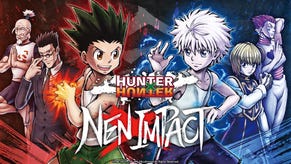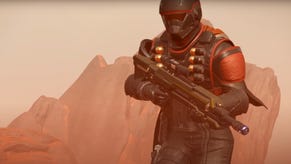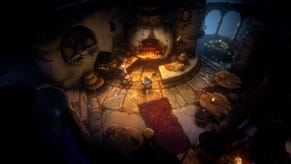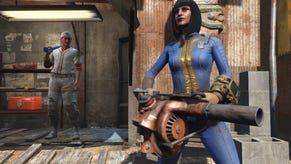Everyone's a Critic: Dynasty Warriors Next
Resident Dynasty Warriors fangirl Brenna Hillier met her match in legendary producer Kenichi Ogasawara, the man behind Vita launch title Dynasty Warriors Next.
I'm a big fan of Omega Force's Musou franchise, usually known as "Warriors" in English. I have strong opinions on which games, combat systems, and platforms are best, and have passionate arguments about exploitable juggles, relative character strength, and historical accuracy. I've read the Romance of the Three Kingdoms multiple times. Thanks to the series's poor international reputation, it's rare for me to be in a professional situation and not the biggest Musou geek in the room.
But Kenichi Ogasawara is a KOEI producer who is officially the biggest Musou geek in the world. He has been part of the Dynasty Warriors series right from the start, serving as a designer on the earliest games. His massive Three Kingdoms nerdage is responsible for Dynasty Warriors' distinctive marketing - that's a story for another day - and he loves the formula so much that he's not afraid to mess with it.
Ogasawara actually walked away from his baby for a few years, but during this time, he did some bold things. He directed Bladestorm: The Hundred Years War - a highly divisive action-strategy bend from the early PlayStation 3 era - which took the Musou core and then ran it through a shredder, piecing together something almost unrecognisable.
He also created the Strikeforce series, a PSP spin-off with a multiplayer focus which moved the series out of its primarily obsessive single-player setting and made it something of a cultural force in Japan.
So: Not only was he responsible for the first really successful portable incarnation, he's also not afraid to take things in new directions, something the ageing franchise inarguably needs. He's the natural choice to produce Dynasty Warriors Next, likely to prove one of the most important Japanese launch titles for the Vita.
I spent some time with the game, waving aside the PR rep who wanted to teach me how to pull off a charge combo as if I were some kind of newb - before hastily calling him back to explain the new, Vita-specific functions presented on screen in moon language.
A new kind of special attack has been added, which fills the screen with explosions - by rapidly tapping the rear touchscreen while rotating the camera, the player can pinpoint enemies for extra damage.
Later, moving between battles, I was ambushed by a small group of troops, and had to wave the Vita about, triggering the gyro controls, to target each attacker before dispatching them with a smack of the touch screen.
It was good fun, but seemed a little gimmicky, and something of a disappointment given Ogasawara's performance with the previous portable games - but the producer seems more interested in exploiting the console's increased connectivity than its bristling array of input methods.
"Apart from what you've seen, we're adding in online play," he reassured me through a translator when I asked what had changed. The first mode, as Ogasawara himself pointed out, isn't new - ad-hoc co-operative multiplayer for you and three friends.
"The second one, you actually play with people - but not directly," he added, mysteriously.
Dynasty Warriors Next's infrastructure multiplayer is unlike anything the series has spawned before. Although its basic premise - China is divided into multiple territories, you want to conquer them all - isn't terribly exciting, how those regions are populated is.
"You download their data from our servers - maybe up to 20-ish people," Ogasawara explained.
"You get data from people who are either your friends or your enemies, and you go fight with or against those people. You don't really play with people in the stage, but you play with them in real-time by getting their data."
In other words, you are given a pool of ghosts, some of them friendly and others hostile, and as you play through your own conquest mode, you'll encounter these unique allies and opponents on the battlefield.
"For example, if one guy conquers one part of Ancient China, you win [fighting alongside] him - if he's your friend. If one of your enemies gets another part, you'll actually fight each other," the producer said.
In the course of a level, players will face off against another player's avatar - possibly a unique character built in the game's editor - whose fighting style will be influenced not just by their level and equipment, but by their unique play style. Tend to charge in hard and fast? Prefer the cautious approach and a solid defence? So will your ghost.
The resulting enemies are likely to be much tougher than the randomly-generated AI the game will supply in off-line mode, which in previous games have tended to follow predictable, often historically-guided paths through levels.
This is actually a little worrying, because the series, though much dismissed in the West, contains a surprising amount of depth for those who want to ramp the difficulty up and learn the fighter-like intricacies - meaning it can be tough as nails. The Strikeforce games were virtually impossible in single-player, and even with three friends, not exactly easy. The last thing the casual button masher wants is to face off against a ghost of a player who never, ever gets hit and has a weapon born of months of grinding.
In answer to my question of whether the game would cater to both casual and hardcore fans, Ogasawara talked for several minutes, a reply which was severely cut down in translation to "yes", pretty much.
"Not only the gameplay and the game design but the story will be much deeper than in past titles," the producer said.
"This time around, including the new features specific to Vita, you have a much deeper gameplay - but one you can enjoy having just a ten minute play, plus another much deeper layer."
Here the translator paused, and added a personal take:
"Mr Ogasawara, he's really trying hard to push the series further, and to make new challenges happen. You can rely on him in that."
Ogasawara stared straight into my face and nodded, grimly. I bowed. There didn't seem much to say to that.
Dynasty Warriors Next is expected to launch alongside the Vita in December in Japan, and February elsewhere.





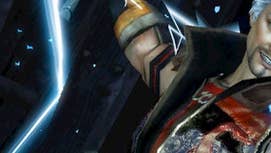
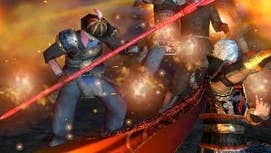
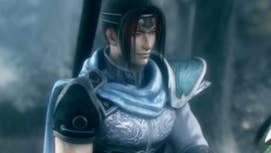
.png?width=291&height=164&fit=crop&quality=80&format=jpg&auto=webp)


